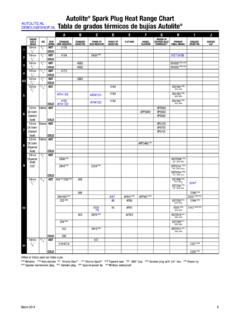

MFG Recommendations: approx 11:1 compression

Plug: NGK FR5 (stock number 7373) Autolite AR3924 (Racing Plug) Autolite 3924 Champion RC9YC (stock number 2075) Denso K20PR-U (stock number 3145) Denso IK20 (stock number 5304) MFG Recommendations: approx 10.5:1 compression Plug: NGK FR4 (stock number 5155) NGK BKR5EIX (stock number 6341) Autolite 3926 Champion RC12YC (stock number 71) Denso IK16 (stock number 5303) Stock – MFG Recommendations: approx under 9:1 compression Plug: NGK 5672A-10 (stock number 7942) Autolite AR50 Denso IQ31 (stock number 5323) Plug: NGK 5672A-9 (stock number 7405) Autolite AR3910 Champion C59YC (stock number 792) Denso IQ27 (stock number 5315) Denso IQ01-27 (stock number 5708)(diagonal platinum ground) Denso IQ02-27 (stock number 5711)(horizontal platinum ground) Plug: NGK BR7EF (stock number 3346) NGK TR7IX (stock number 3690) Autolite AR94 Denso IT22 (stock number 5327) Plug: NGK TR6 (stock number 4177) NGK TR6IX (stock number 3689) Autolite 103 Denso IT-20 (stock number 5326) Plug: NGK TR55 (stock number 3951) NGK TR55IX (stock number 7164) Autolite 764 Champion RS14YC6 (stock number 13) Denso IT-16 (stock number 5325) ****Note: NGK IX and Denso plugs are Iridium. ***Note: List is intended for reference only. Not all plug manufacturers follow the same guidelines. **Note: Heat ranges are determined by NGK standards. If you guys would like to see certain plug manufacturers added, let me know. Maybe someone can sticky it to the top so that people can easily reference it? It's fairly hard to compare each manufacturers heat range since there are so many factors involved but this is, in my opinion, the closest match for NGK's heat range system, which was used in the chart. Installing a hotter heat range plug will reduce the pre-ignition safety margin, so it is better to correct the mechanical or tuning issue instead of changing the plug heat range.Hey guys, been working on this for a little while and finally have it ready to post. Often hotter heat ranges have been used to address a fuel delivery or oil consumption problem. For a spark plug to function properly, it must have a tip temperature high enough to burn off carbon deposits (self-cleaning) and avoid fouling, while remaining low enough to avoid overheating the ceramic firing end and pre-ignition.įor most vehicles, the factory recommended heat range is sufficient however, on some modified or special-use engines, alternative heat ranges may be necessary. As a result, less heat stays in the ceramic firing end and more is dissipated to the engine. A colder heat range spark plug has an insulator design with a shorter heat flow path to the metal shell of the plug. As a result, more heat stays in the ceramic firing end and less is dissipated to the engine. The spark plug heat range only indicates the rate that the spark plug dissipates its firing end heat to the engine.Ī hotter heat range spark plug has an insulator design with a longer heat flow path to the metal shell of the plug. The spark plug is heated during combustion and must dissipate that heat to the cylinder head at a certain rate to avoid overheating the ceramic firing end. Another common misconception is that the spark plug is designed as a heat sink to “remove” heat from the combustion chamber. One misconception is that the heat range is related to the spark temperature or intensity. One of the most misunderstood aspects of spark plugs – is the heat range.


 0 kommentar(er)
0 kommentar(er)
